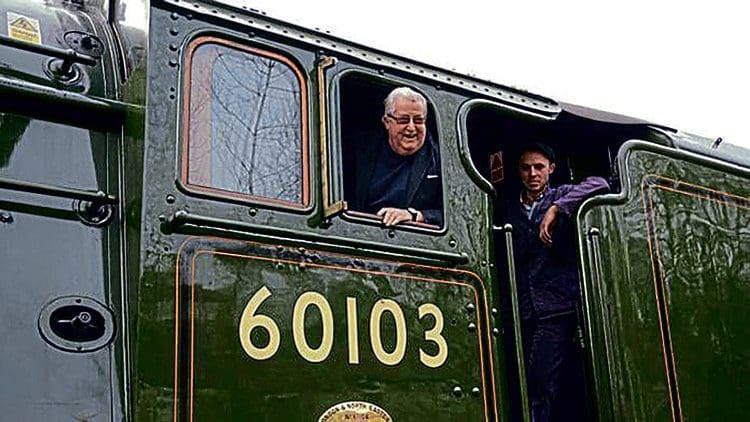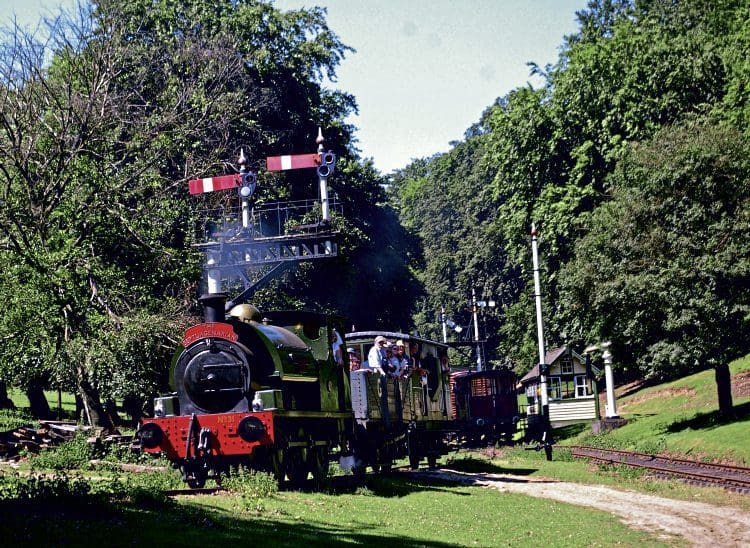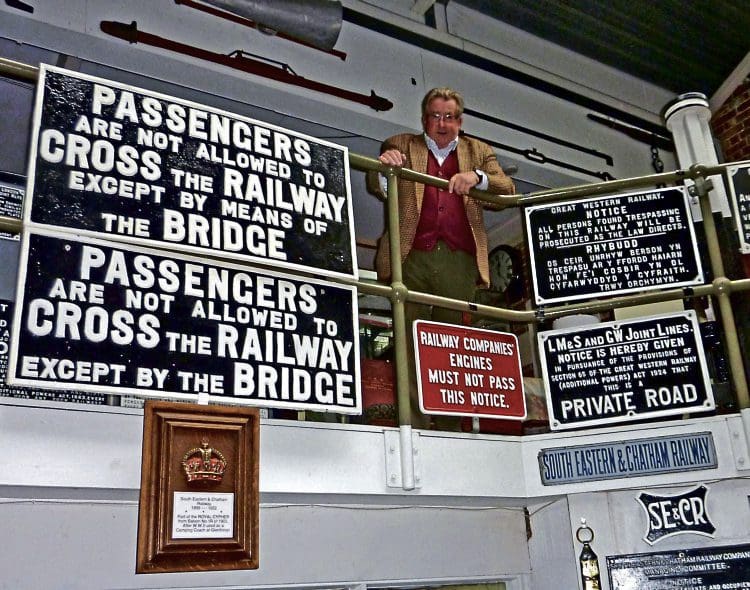The heritage sector has been in mourning following the death of one of its greatest benefactors, Sir William McAlpine, at the age of 82. Known by many in the preservation movement simply as ‘Mr Bill’, he was best known by the public for bringing Flying Scotsman home after it became marooned in California amidst fears it might be scrapped, and has been described as an ‘unsung hero’ who did much behind the scenes to make modern-day mainline steam and much else on heritage lines happen. Robin Jones looks back at the life and just some of the multiple achievements of this truly remarkable powerhouse of preservation.
William Hepburn McAlpine (known to many in the heritage sector as Bill) was born at the Dorchester Hotel in Park Lane, which was built and owned by his family, on January 12, 1936, and raised at the family home in Surrey.

His great-grandfather, ‘Concrete Bob’ McAlpine, was the founder of the civil engineering firm and his late brother Alistair – Lord McAlpine of West Green – served as treasurer of the Conservative Party and was a great friend of Margaret Thatcher.
Sir Robert McAlpine built some of the best-known landmarks in Britain, such as the Glenfinnan viaduct, the West Highland Extension, the Glasgow underground and the old Wembley stadium (where a contractor’s internal combustion locomotive is believed to be buried under the pitch).
Enjoy more Heritage Railway reading in the four-weekly magazine.
Click here to subscribe & save.

William was the son of the fifth baronet Sir Robert McAlpine and his mother Ella Mary Gardner Garnett. Sir William succeeded to the baronetcy on the death of his father in 1990.
Sir William attended Charterhouse School but left at 16 to join the family construction business. Childhood visits to construction sites with narrow-gauge steam railways fired young Bill’s imagination and he began work at its 30 acre Hayes depot where much of the McAlpine railway operation was based. Apart from two years’ national service with the Life Guards, he remained as a director until 2007, having expanded the firm’s interests in domestic and commercial construction.

Bill married Jill Benton in 1959; they had two children, Andrew and Lucinda.
He started building his standard gauge railway at Fawley Hill in 1965. It includes, at 1-in-13.4, the steepest adhesion-worked standard gauge railway in the world, and in 1968 he added the closed original station from Somersham in Cambridgeshire, followed later by the Midland Railway signalbox from Shobnall Maltings near Burton-on-Trent and a footbridge from Brading on the Isle of Wight.
He bought Hudswell Clarke 0-6-0ST No. 31 (works number 1026 of 1913) which had been supplied new to Sir Robert McAlpine & Sons, and had been based at the Hayes depot. When no longer required the locomotive was offered for sale for £100 and Bill was on hand to snap it up. No. 31 still runs on the Fawley Hill Railway today.
Read more in Issue 240 of HR – on sale now!
Advert
 Enjoy more Heritage Railway reading in the four-weekly magazine. Click here to subscribe.
Enjoy more Heritage Railway reading in the four-weekly magazine. Click here to subscribe.




